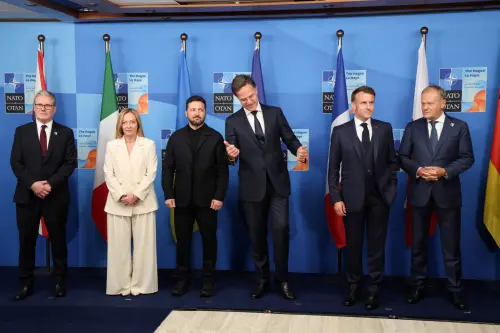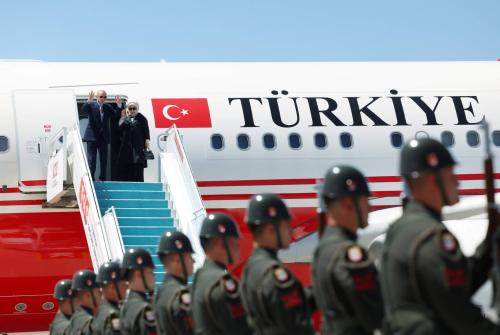The words that Russian President Vladimir Putin chose for describing the nuclear angle of the special operation for seizing and annexing Crimea in March 2014, might appear so odd that it is well-nigh impossible to make sense of them. “Yes, we were ready,” he said to the question about whether the option of putting strategic forces on high alert was considered. He then clarified that these forces were always on high readiness status. And when “some military experts” advised him to use all available means of deterrence, he said “No,” according to the propaganda documentary shown two weeks ago on Russian television.
The message is perhaps confusing, but regardless we should take Putin’s nuclear discourse very seriously. Broadly ignorant of how nuclear deterrence works, Putin and his cronies are both irresponsible and reckless when it comes to using nuclear threats for political purposes.
Ukraine is a case in point. What could have been the result of a high nuclear alert if Ukrainian garrisons in Crimea had decided to resist the arrival of “polite green men”—Russian soldiers without identification insignia? Or for that matter, if under these circumstances the government in Kyiv had decided to send reinforcements to repel the Russian invasion. Nuclear options were entirely redundant for that projection of power, so the only meaningful interpretation of this “honest and open position” (as Putin defines his own stance) is to see it as an attempt to shift the focus from the decision-making on Crimea then to the power-play with the West now.
Despite some tactical victories, Putin’s ‘hybrid war’ on Ukraine has not gone well at all, and presently he finds himself in an awkwardly tight corner in Donbass. As the pause defined by the Minsk-2 deal holds, Russia is emerging as a loser with its economy shrinking under the combined impact of sanctions and recalibrating oil prices. Moscow could go for yet another ‘victory’ at Mariupol and hope to consolidate it with a third Minsk deal, but the trajectory of the small war going to a major defeat will only register another minor zigzag.
The number of deployable battalions is finite, and that the quality of the draft (the spring cycle of which has just begun) has not improved at all with the surge of ‘patriotic’ mobilization. In this context, the heavy priority placed on upgrading strategic nuclear forces in the Russian 2020 Rearmament program looks increasingly unwarranted. Steven Pifer is absolutely right that this costly modernization should be “no cause for undue alarm” because it cannot alter the U.S.-Russian strategic balance that is fixed by 2010’s New START Treaty. Yet, there is more to the ever-shifting strategic balance than just bean-counting. The deteriorating stance in the confrontation with the West makes it imperative for Russia to try to harvest some political dividends from the massive investment in its nuclear forces. Putin just cannot afford not to play on this source of strength because he has no other.
The snap military exercises that Putin ordered immediately after emerging from a week-and-a-half long absence are aimed precisely at bringing nuclear assets into the game. Long-range Tu-22M (Backfire) bombers are deployed to Crimea, the Iskander tactical missiles have been shipped to Kaliningrad, and strategic Tu-95MS (Bear) bombers recently made a flight over the Barents Sea. Yet, ageing Bears and Backfires can hardly impress NATO pilots, who have long since perfected the skills of intercepting them. It is also worth reflecting that the last time the Iskanders arrived in Kaliningrad, mid-December 2014, the impression was spoiled by the spectacular collapse of the ruble. Strategic submarines could have made a better show, but the Boreys are not ready for deployment, and while the three latest tests of the Bulava missile were successful, they have spectacularly failed in the past and no one can predict the outcome of a new series of launches scheduled for this autumn.
Putin’s persistent reminders about Russia’s nuclear might, therefore, need better corroborating evidence than occasional air shows, particularly since the bombers have always been the weakest “leg” of Russia’s strategic triad. Withdrawal from the Intermediate-range Nuclear Forces Treaty would hardly be a smart move, because it would open for the United States an opportunity to deploy medium-range high-precision weapon systems to Europe. What could be an interesting option for Moscow is the resumption of nuclear testing, particularly since the reliability of many old warheads is indeed questionable. There is certainly no need to explode another 50 megaton bomb, as Nikita Khrushchev did in 1961 with the Tsar-Bomba; but a single test of a 10 to 15 kiloton weapon in the air over Novaya Zemlya in the Arctic is certain to produce plenty of shock and awe.
Putin and his cronies have never even gone through the beginners’ course in the old school of nuclear deterrence, but they are masters of palace intrigues, in which loyalty has to be proven by readiness to jump beyond the borders of common sense. As Russia sinks deeper into the quagmire of its leadership crisis, their definition of acceptable risk is getting more and more relaxed. That should worry us immensely.
The Brookings Institution is committed to quality, independence, and impact.
We are supported by a diverse array of funders. In line with our values and policies, each Brookings publication represents the sole views of its author(s).




Commentary
Apocalypse a bit later: The meaning of Putin’s nuclear threats
April 1, 2015